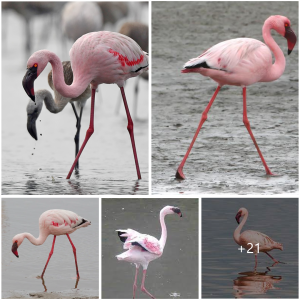
The Magnificent Bustard: A Majestic Icon of Grasslands
The Bustard, scientifically known as Otis, is a remarkable bird species renowned for its majestic presence and impressive size. With its striking appearance and fascinating behaviors, the Bustard holds a special place in the ecosystem of grasslands and open landscapes. Let’s delve into the captivating world of the Bustard and uncover the intricacies of this magnificent avian species.
Appearance and Size: One of the most notable features of the Bustard is its large size, making it one of the heaviest flying birds in the world. Bustards typically have long legs, a broad body, and a relatively short tail. Their plumage is predominantly brown or gray, providing effective camouflage in their natural habitat. Males often boast elaborate courtship displays, including inflatable throat sacs, colorful neck patches, and intricate feather patterns, to attract mates during the breeding season.
Habitat and Range: Bustards are primarily found in open grasslands, savannas, steppes, and scrublands across various continents, including Africa, Europe, Asia, and Australia. They prefer habitats with low vegetation and ample space for foraging and displaying. Bustards are well-adapted to arid and semi-arid environments, where they can find food and shelter amidst the vast expanses of grass and shrubbery.
Diet and Feeding Behavior: As omnivorous birds, Bustards have a diverse diet that includes insects, small mammals, reptiles, seeds, fruits, and plant matter. They are opportunistic foragers and use their keen eyesight and acute hearing to detect prey from a distance. Bustards often feed by walking slowly through their habitat, probing the ground with their beaks to uncover hidden insects or seeds. During the breeding season, males may also engage in elaborate courtship displays to attract females, showcasing their strength, agility, and vitality.
Breeding and Reproduction: Bustards typically breed during the spring and summer months, with males engaging in elaborate courtship rituals to attract females. These displays often involve impressive aerial maneuvers, vocalizations, and visual displays to demonstrate their fitness and prowess. Once a female is impressed, she will choose a suitable nesting site, usually a shallow depression in the ground lined with grass and other plant materials. After laying her eggs, the female will incubate them for several weeks until they hatch. Bustard chicks are precocial, meaning they are born with their eyes open and can walk shortly after hatching.
Conservation Status: Several species of Bustards are facing conservation challenges due to habitat loss, poaching, agricultural intensification, and collision with power lines. As a result, many Bustard species are classified as vulnerable, endangered, or critically endangered by the International Union for Conservation of Nature (IUCN). Conservation efforts focused on habitat protection, captive breeding, anti-poaching measures, and community engagement are crucial for the long-term survival of these iconic birds.
In conclusion, the Bustard is a magnificent and charismatic bird species that symbolizes the beauty and diversity of grassland ecosystems. With their impressive size, elaborate courtship displays, and vital ecological role, Bustards capture the imagination of birdwatchers, conservationists, and nature enthusiasts worldwide. By raising awareness, supporting conservation initiatives, and preserving their natural habitats, we can ensure a brighter future for these majestic icons of the grasslands.





